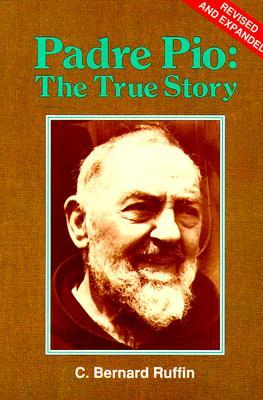Francesco Forgione (known as Padre Pio de Pietrelcina) was born in Pietrelcina, Italy, in 1887, into a humble and very Catholic family, as a child he was charitable and always did penance to God, with very fragile health, he was always ill From a very young age he met a Capuchin monk of the convent of Morcone, Frei Camilo, who visited his house asking for alms , and has since expressed his desire to be a priest.
At the age of 16 he decided to become a brother, being accepted as a novice, his teacher was Father Tommasso, a little harsh, but very charitable with the inmates, life there was very difficult, he had to fast for long periods, which strengthened his character and spirit, his illnesses increased and they did not abandon him until his death, in 1904 he made his temporary vows and moved to another convent to continue his studies , it was there that he first played in the phenomenon of bilocation, in the birth of his future spiritual daughter.
- In 1907 he made his permanent vows and had to leave for another place.
- Near the sea.
- Which worsened his health.
- And then he had to return.
- In 1910 he moved to Benevento and in 1916 he was sent to the convent of San Giovanni Rotondo.
- Where he lived until his death in 1968.
- 50 years after receiving his first stigmatization.
During his life he suffered five stigmas throughout his body, which correspond to the five wounds Jesus suffered on the cross; despite bleeding for half a century, he never developed anemia; It is said that Father Pio also had the ability to be in two places at the same time, could work miracles, and was a clairvoyant.
In 1915 he felt intense pain in the feet, hands and right side of the torso, doctors could not find the reason for the pain, after three years he screamed in agony and fell to the ground, bleeding in these places, showing the pain. early stigmas.
As soon as he regained consciousness he resumed his activities and doctors began to study his case, unable to find out what had happened, authorities in the area ordered that he be photographed so that the incident could be monitored. Father Pio can be seen with a great expression of sadness, very pale, with a tired and tortured face, but very dismayed at having to pose with bloodied hands.
With the initial cry diminished, Father Pio returned to his monastery, where he often felt carried away by a great ecstasy that ended in bleeding and further weakened his health. From then on, Santo’s fame spread throughout Italy. Hundreds of people came from many places to meet and confess to him. Many have said that the priest knew their sins, even before they confessed them.
The first miracles soon came. The first case was that of Gemma di Giorgi, who was born without pupils in his eyes, shortly after the priest’s visit, he began to see, as if he had never been blind, a doctor interested in his stories reported that, in many cases, it could be a psychosomatic response due to his belief in Father Pio, but in other cases this was not the case.
Among his strangenesses? It was said that the priest could be in two places at the same time; as in the case of Bishop Damiani, who had traveled from Uruguay to Italy to see him, this man’s wish was for Father Pio to be present on the day of his death, however, the priest replied that by the time this would not be possible, since his death would occur in 1942. When Damiani died in his native country that year , the Archbishop of Montevideo was awakened by a Capuchin priest who broke the news to him. In his hands was found a note written by himself, which read: “Father Pio came to see me. “
But it does not end there, after seven years, the archbishop went to Italy to meet Father Pio, and what was his surprise when he was greeted by this Capuchin brother who had awakened him on the night of Monsignor’s death. What happened during the war, when a commander thought he was committing suicide, a man approached him and told him not to, when he managed to convince the commander, the priest magically disappeared. Mass, he recognized him, waited for him and approached him. The clergyman said, “You were lucky enough to escape, my friend. “
On the death of Father Pio, the Catholic Church suggested three possibilities for the phenomena attributed to it: diabolical intervention, divine intervention and unconscious suggestion. He was canonized by John Paul II in 2002. Father Pio’s faithful say that his gifts were of extraordinary discernment: reading thoughts, miraculous healings, bilocation (being in two places at the same time), the tears he shed while praying the Chapel, the perfume (?Smell of holiness?) And also stigmas (presented for 50 years).

